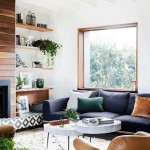How To Decorate a Bedroom With a Low Ceiling
Decorating a bedroom with a low ceiling presents a unique set of challenges. Effectively addressing these challenges relies on employing design strategies that visually expand the space upward, creating a sense of height. Careful consideration of color palettes, furniture selection, lighting, and accessories can transform a potentially cramped and enclosed room into a comfortable and aesthetically pleasing sanctuary.
A common misconception is that low ceilings inherently limit design options. However, by focusing on specific techniques, it is possible to create an illusion of height, ultimately mitigating the oppressive feeling that low ceilings can sometimes induce. This approach centers on maximizing natural light, streamlining furniture, and strategically utilizing vertical space.
Optimizing Vertical Space and Visual Height
One of the primary goals in decorating a bedroom with a low ceiling is to draw the eye upwards. This can be achieved by emphasizing vertical lines and minimizing horizontal clutter. This approach hinges on manipulating the perception of space through intentional design choices.
Wall Treatment: Selecting the correct wall color is paramount. Light and airy colors, such as whites, creams, and pale blues, reflect light and create a sense of openness. Avoid dark or overly saturated colors, as these can absorb light and make the room feel smaller. Consider painting the ceiling a shade lighter than the walls to further enhance the illusion of height. Vertical stripes, whether painted or incorporated through wallpaper, are highly effective in visually stretching the walls upwards. However, caution is advised; overly bold or wide stripes can overwhelm the space. Subtle, thin stripes are generally more effective in a small room.
Furniture Placement: The placement and selection of furniture are critical. Avoid bulky or tall furniture pieces that can overwhelm the room and draw attention to the low ceiling. Opt for low-profile furniture, such as platform beds and streamlined dressers. Wall-mounted shelves and floating nightstands are excellent solutions, as they free up floor space and contribute to a more open feel. Arrange furniture in a way that allows for clear pathways, preventing the room from feeling cramped and claustrophobic. Avoid placing tall items directly against walls, as this can emphasize the low ceiling; instead, allow for some space above the furniture to create a sense of airiness.
Window Treatments: Window treatments play an important role in maximizing natural light and creating a sense of height. Choose long, flowing curtains that extend from the ceiling to the floor. This draws the eye upwards and creates a vertical line. Avoid heavy or dark curtains, as these can block light and make the room feel smaller. Sheer or lightweight fabrics are ideal, as they allow natural light to filter through while still providing privacy. Consider using curtain rods that are mounted higher than the actual window frame to further enhance the illusion of height.
Maximizing Light and Minimizing Clutter
Sufficient lighting and a clutter-free environment are essential for creating a sense of spaciousness in a small bedroom with a low ceiling. Dimly lit and cluttered rooms tend to feel even smaller and more confined, while bright and organized spaces appear larger and more inviting.
Lighting Strategies: Layered lighting is crucial. Avoid relying solely on a single overhead fixture, as this can create harsh shadows and emphasize the low ceiling. Instead, combine ambient, task, and accent lighting to create a well-lit and balanced space. Recessed lighting is an excellent option for ambient lighting, as it does not take up any vertical space. Wall sconces can provide task lighting without cluttering nightstands. Floor lamps and strategically placed table lamps can add warmth and depth to the room. Opt for fixtures with upward-facing light to bounce light off the ceiling and create a sense of height. Ensure that all lighting fixtures are appropriately scaled to the size of the room; oversized fixtures can overwhelm the space.
Decluttering and Organization: A decluttered room inherently feels larger and more open. Regularly remove unnecessary items and implement effective storage solutions. Utilize under-bed storage containers, wall-mounted shelves, and multi-functional furniture to maximize space. Keep surfaces clear of clutter and organize belongings in a neat and visually appealing manner. Consider using decorative baskets or storage boxes to conceal items and maintain a tidy appearance. A minimalist approach to decor is often the most effective, as it reduces visual noise and creates a sense of calm and spaciousness. Prioritize essential items and carefully curate accessories to avoid overwhelming the room.
Mirror Placement: Mirrors are powerful tools for creating the illusion of space. Strategically placing a large mirror on a wall can visually double the size of the room. Position the mirror to reflect natural light or a focal point, such as a window with a view, to maximize its impact. Avoid placing mirrors directly across from a door, as this can create a disorienting effect. Consider using a full-length mirror to create a sense of height and provide a practical function. Smaller mirrors can also be used to add depth and dimension to the room. However, avoid using too many small mirrors, as this can create a cluttered and fragmented look.
Selecting the Right Decor and Accessories
The decor and accessories chosen for a bedroom with a low ceiling should be carefully selected to enhance the illusion of height and maintain a sense of spaciousness. Avoid items that are overly bulky, heavy, or visually overwhelming. Instead, opt for pieces that are lightweight, airy, and strategically placed.
Artwork and Wall Decor: When selecting artwork, choose pieces that are vertically oriented. Tall, narrow paintings or prints will draw the eye upwards and create a sense of height. Hang artwork at eye level or slightly higher to further enhance this effect. Avoid using large, horizontal pieces that can emphasize the low ceiling. Consider creating a gallery wall with a collection of smaller, vertically aligned prints or photographs. Alternatively, a single, statement piece of artwork can serve as a focal point and draw attention away from the low ceiling. Frame artwork simply and avoid using overly ornate or heavy frames, as these can overwhelm the space.
Textiles and Bedding: The textiles and bedding chosen for the bedroom should be lightweight and airy. Avoid using heavy or bulky comforters or duvets, as these can visually weigh down the room. Opt for lighter fabrics, such as linen or cotton, in light and neutral colors. Use decorative pillows sparingly and choose pillows that are smaller in size. Consider using a bed skirt to conceal under-bed storage and create a cleaner, more streamlined look. Choose bedding with subtle patterns or textures to add visual interest without overwhelming the space. Vertical stripes or patterns can further enhance the illusion of height.
Rugs and Flooring: The choice of rugs and flooring can also impact the perception of space. Light-colored flooring can help to brighten the room and create a sense of openness. Avoid using dark or heavily patterned rugs, as these can visually shrink the space. Choose a rug that is appropriately sized for the room; a rug that is too small can make the room feel smaller, while a rug that is too large can overwhelm the space. Consider using a rug with vertical stripes or a subtle pattern to further enhance the illusion of height. Ensure that the rug is properly anchored to prevent it from slipping and creating a safety hazard.
By carefully considering these design strategies, it is possible to transform a bedroom with a low ceiling into a comfortable, stylish, and visually spacious retreat. The key is to focus on maximizing light, minimizing clutter, and employing design elements that draw the eye upwards and create a sense of height.

How To Make Your Low Ceiling Rooms Appear Taller Remodel Bedroom Design Interior

How To Decorate A Bedroom With Slanted Ceiling The Nordroom

Clever Design S For Low Ceilings

Low Ceiling Lighting Ideas For Your Home Designcafe

Low Ceiling Bedroom Design False Light

How To Decorate A Small Room With Low Ceilings Decoholic

How To Decorate Rooms With Slanted Ceilings Or Walls

Low Ceiling Attic Bedroom

Maximising Space In Low Ceiling Attic Rooms Holistic Doctor

24 Dreamy Low Sloped Ceiling Bedroom Ideas
Related Posts







